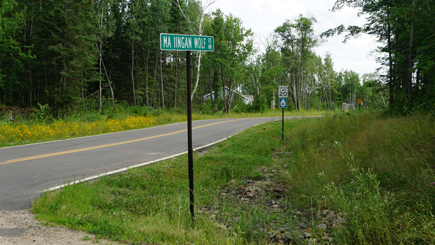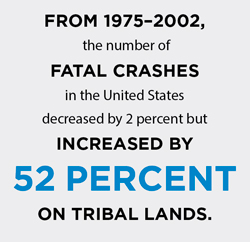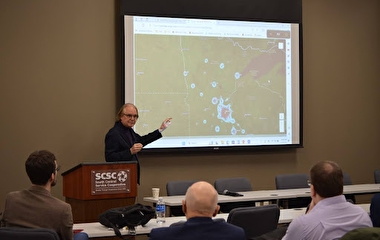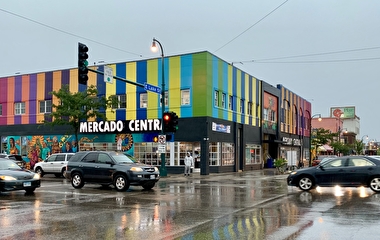County, Minnesota. Photo: Guillermo Narváez
The fatality rate for motor vehicle crashes is higher for American Indians than for any other ethnic or racial group in the United States. The challenges of roadway safety on tribal lands were discussed during the Roadway Safety Showcase: Safety Innovations for Today and Tomorrow. The event, held in St. Paul in May, highlighted the latest work of Roadway Safety Institute (RSI) researchers.
In opening remarks, USDOT Assistant Secretary for Transportation Greg Winfree noted the importance of the tribal transportation issue not only from a safety perspective, “but from [its] ability to uplift all Americans and guarantee…ladders of opportunity,” he said.
Winfree introduced assistant professor Kathryn Quick and research associate Guillermo Narváez, researchers at the U of M’s Humphrey School of Public Affairs who are exploring this issue. In an RSI-sponsored project, Quick and Narváez are collaborating with American Indian communities to better understand the transportation safety risks on tribal lands and develop strategies to mitigate these risks.
Quick and Narváez are focusing on gathering on-the-ground knowledge about the nature of roadway risks and options to improve safety on reservations in Minnesota. “We’re also actively and intentionally trying to build and sustain relationships with tribal communities to address these kinds of issues over the long term,” Quick said.
The researchers are reviewing crash data, collaborating with the Advocacy Council on Tribal Transportation, and conducting interviews with key stakeholders. They have collaborative research agreements with four tribal governments: the Red Lake Band of Chippewa, Leech Lake Band of Ojibwe, Fond du Lac Band of Lake Superior Chippewa, and Mille Lacs Band of Ojibwe.
Preliminary findings suggest that tribal transportation safety problems may not be so different from rural safety problems, except for a much greater concern for pedestrian safety.
Many reservation residents, by choice or necessity, travel on foot in the roadway as a way to get around, and several tribal governments are actively promoting walking, jogging, and biking for their recreational and health benefits. However, people feel unsafe because of narrow road shoulders, poor lighting, vegetation, or wildlife. In addition, there are many concerns that drivers who are not from the reservation do not expect or anticipate pedestrians in some locations, as well as concerns about congestion and speeding by non-locals, especially during peak tourism periods.
Tribal transportation leaders have not mentioned alcohol-impaired driving as a top challenge, Quick said, which is a bit surprising given popular perceptions and some previous studies. “We will be continuing to probe that as we develop relationships and trust with them.”
The team has also heard themes around enforcement and how it’s key not just for supporting safety but also for reporting and monitoring safety issues.
“There are some collaborative issues …around data quality, data sharing…and barriers to interpreting that data. There are also many jurisdictional and coordination issues relating not only to data sharing but also around setting priorities for safety resources,” Quick said.
On this issue, the team is collaborating with RSI researcher Tom Horan. That project is investigating the potential of new advances in GIS and how can it enhance the collection, availability, and use of information related to transportation safety within the tribal environment.




